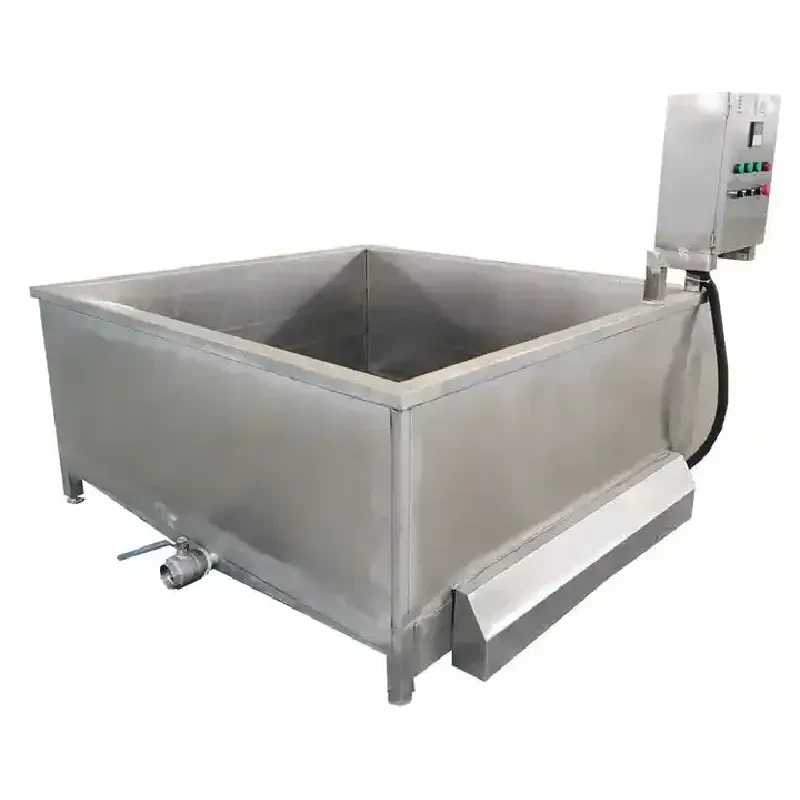Efficient Cattle Feed Pellet Production Equipment for Optimal Livestock Nutrition
Sep . 30, 2024 13:01 Back to list
Efficient Cattle Feed Pellet Production Equipment for Optimal Livestock Nutrition
The Significance of Cattle Feed Pellet Machines in Modern Agriculture
In the contemporary agricultural landscape, the importance of efficient feeding systems for livestock cannot be overstated. Among the various innovations that have revolutionized animal husbandry, cattle feed pellet machines stand out as crucial tools that enhance the productivity and health of livestock. These machines are specifically designed to produce feed pellets that are not only nutritious but also economical, thereby benefiting farmers and promoting sustainable agricultural practices.
Understanding Cattle Feed Pellet Machines
A cattle feed pellet machine is a specialized piece of equipment that compresses a mixture of raw ingredients, such as grains, nutrients, and additives, into small, cylindrical pellets. The process of pelleting involves several steps grinding the raw materials to a fine powder, mixing them with water or steam to create a homogeneous mixture, and then forming the pellets under heat and pressure. The result is a durable form of feed that retains its nutritional value, is easier for cattle to digest, and reduces feed waste.
Benefits of Pelleted Feed
1. Enhanced Digestibility Pelleting improves the digestibility of feed. The heat and pressure used during processing break down fibrous materials and activate enzymes, making nutrients more accessible to the animals. This leads to better growth rates and overall health for cattle.
2. Nutrient Preservation Properly manufactured pellets can retain more nutrients compared to loose feed. The pelleting process can help reduce the loss of important vitamins and minerals, ensuring that cattle receive a balanced diet.
3. Reduced Feed Waste Loose feed can be scattered and wasted, but pelleted feed is easier to handle and store. Cattle are more likely to consume the entire pellet, minimizing waste and optimizing feeding efficiency.
4. Improved Palatability The compression process often enhances the flavor of the feed, making it more appealing to cattle. This can lead to increased feed intake, contributing to better growth and milk production.
cattle feed pellet machine

5. Convenience Pelleted feed is easier to transport, store, and distribute. Farmers can efficiently manage their feeding routines, saving time and resources in the process.
Economic Advantages
Investing in a cattle feed pellet machine can lead to significant cost savings for farmers. Producing pellets in-house allows for better control over feed composition and quality. Farmers can source their own ingredients and create customized blends tailored to their herds’ specific nutritional needs. As a result, they can reduce reliance on commercial feed suppliers, which often come with fluctuating prices and varying quality.
Moreover, the durability of pellets means they can be stored for longer periods without spoiling. This extends the shelf life of feed stocks, allowing farmers to bulk purchase ingredients when prices are lower and avoid costly interruptions in feed supply.
Environmental Impact
In an age where sustainability is paramount, the use of cattle feed pellet machines contributes to environmentally friendly farming practices. By minimizing feed waste and ensuring that livestock receive the nutrients they need, farmers can enhance animal welfare while also reducing the environmental footprint of their operations. Efficient feed production helps in lowering greenhouse gas emissions associated with livestock farming.
Conclusion
Cattle feed pellet machines represent a significant advancement in agricultural technology that benefits both farmers and livestock. By improving feed efficiency, preserving nutrients, and reducing waste, these machines play a vital role in fostering sustainable livestock farming practices. As the global demand for meat and dairy products continues to rise, the importance of innovative feeding solutions such as cattle feed pellet machines will only become more pronounced. Investing in such technology is not merely an operational decision; it is a step toward a more productive and sustainable agricultural future. Farmers who embrace this innovation will likely find themselves at the forefront of a transformative movement in the livestock sector.
-
Hot Sale 24 & 18 Door Rabbit Cages - Premium Breeding Solutions
NewsJul.25,2025
-
Automatic Feeding Line System Pan Feeder Nipple Drinker - Anping County Yize Metal Products Co., Ltd.
NewsJul.21,2025
-
Automatic Feeding Line System Pan Feeder Nipple Drinker - Anping County Yize Metal Products Co., Ltd.
NewsJul.21,2025
-
Automatic Feeding Line System - Anping Yize | Precision & Nipple
NewsJul.21,2025
-
Automatic Feeding Line System - Anping Yize | Precision & Nipple
NewsJul.21,2025
-
Automatic Feeding Line System-Anping County Yize Metal Products Co., Ltd.|Efficient Feed Distribution&Customized Animal Farming Solutions
NewsJul.21,2025






